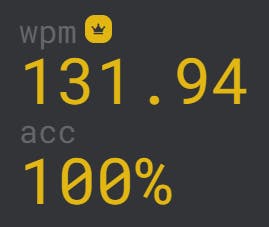Speed Typing
Table of contents
No headings in the article.
Some would say that I have a "thing" for keyboards, and I would have to agree. I learned to type in grade nine and haven't stopped keyboarding since. After delivering more than my fair share of newspapers, I finally saved enough money to buy my typewriter in grade eleven.
According to my teacher, my typing skills were above average. I could quickly type over 80 words per minute on a mechanical machine, and my typing speed cleared 100 words per minute on an electric typewriter. I've had a passion for improving my typing speed ever since.
Many different factors may influence your typing speed, but the fundamental elements that matter most are:
Posture:
Feet flat on the floor,
Wrists in a neutral position (avoid lifting or dropping your wrists),
Forearms at 90 to 110 degrees,
Back straight,
Head up, and
Eyes straight - Top of the screen should be at eye level
Touch Typing:
Learn to type using all of your fingers. This is the best and fastest means of typing. While some have become proficient using just a few fingers, they seldom achieve the speeds possible through touch typing.
Keep your fingers positioned on or over the home row. The fingers of your left and right hand should hover over the letters asdf and jkl; respectively.
Keyboard:
Treat your fingers to a premium keyboard. Many factors define a premium keyboard, and many of them carry a fairly hefty price tag.
I own many different keyboards in various styles. Still, my favourites are the Logitech Craft keyboard and Logitech MX Keys Advanced Wireless Illuminated keyboards, as they both support my workflow across multiple computers and with my MX Master 3S mouse.
As a programmer, my daily driver is the Happy Hacking Keyboard, and the reasons why are worthy of a separate post.
Preventive maintenance: keep your keyboard clean!
Purchase a cover to prevent harmful spills from damaging your keyboard.
Store your keyboard in a carrying case when travelling.
Remember, if you can't type, the best keyboard in the world won't help you.
Ergonomics:
Keyboard layout: QWERTY versus DVORAK
Key Switches:
Type: Mechanical, Optical,
Travel: Pre-Travel / Full Travel
Actuation Force
Tilt: positive/negative - left/right - both
Practice:
Although I type daily as part of my regular job duties, online speed typing exercises are part of my daily routine. You may want to try some of these for yourself:
The feedback following each typing exercise will help to develop your typing skills so that you can focus on practices that will serve you best.

The exercises are not a substitute for the real world, but they will help you perform better.
